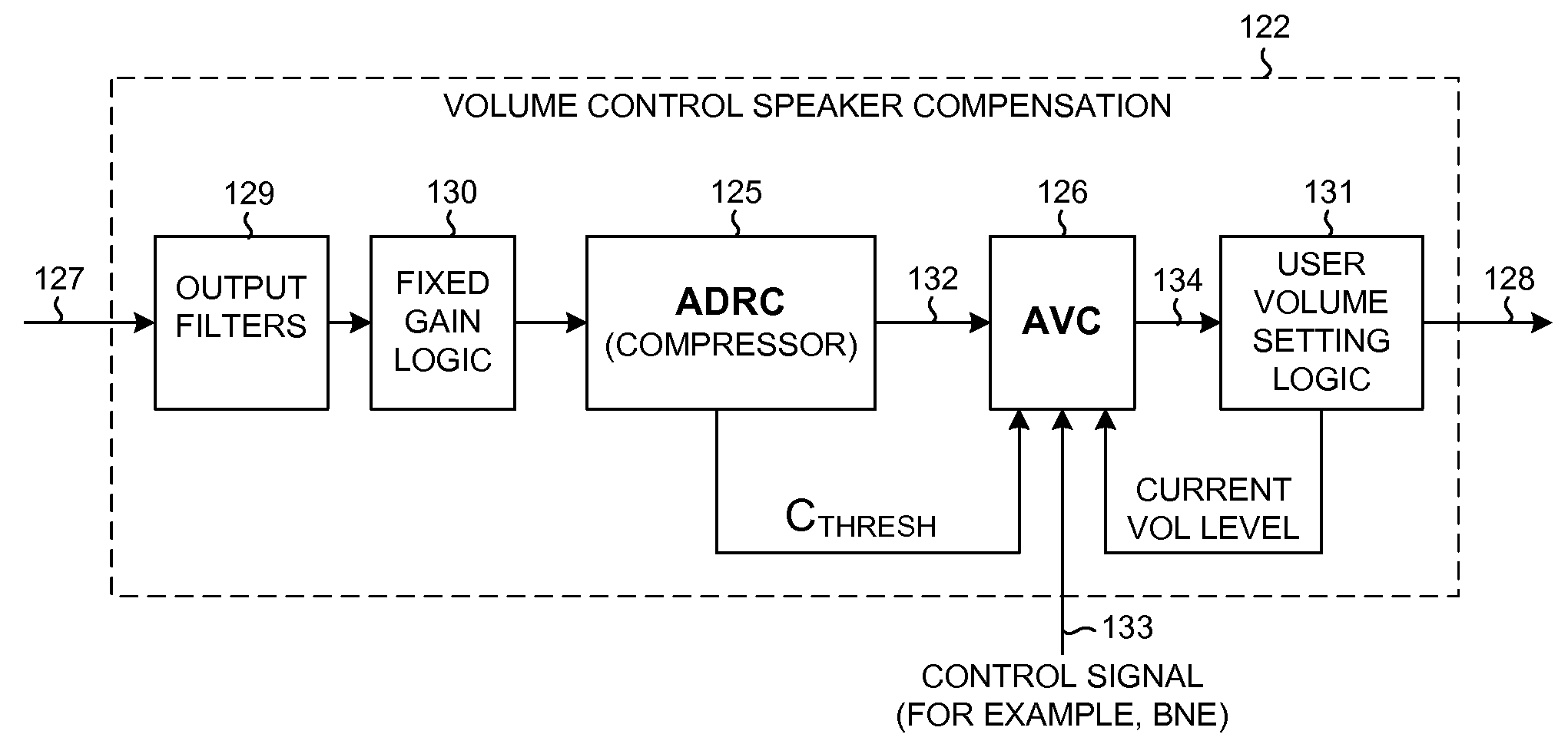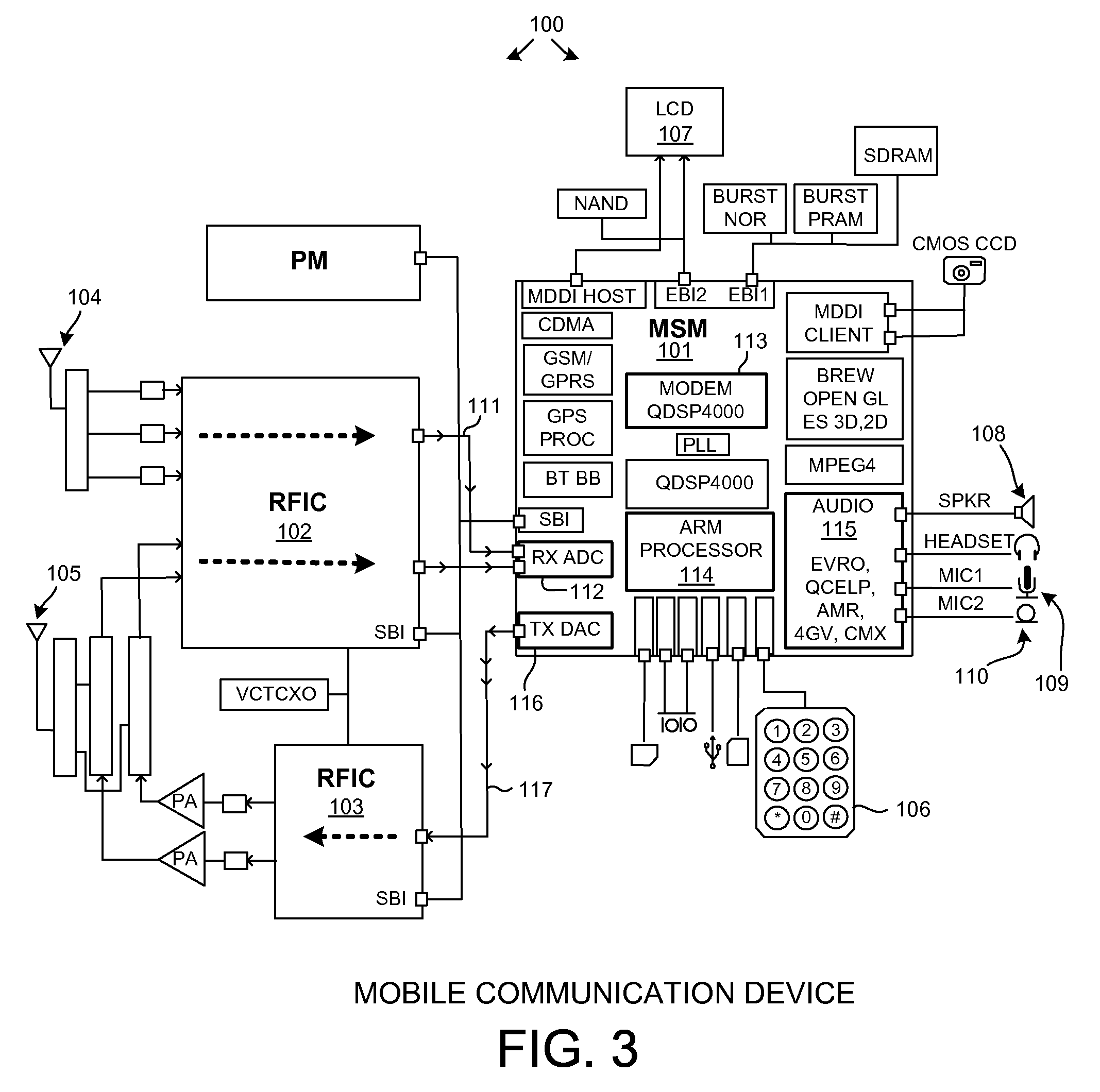Automatic volume and dynamic range adjustment for mobile audio devices
a technology of automatic volume adjustment and mobile audio, applied in the direction of electrical transducers, gain control, instruments, etc., can solve the problems limiting the distance between the multiple microphones and generally not free of the desired speech information of the reference signal, etc., to achieve the effect of limiting the dynamic range of an active noise cancellation system
- Summary
- Abstract
- Description
- Claims
- Application Information
AI Technical Summary
Benefits of technology
Problems solved by technology
Method used
Image
Examples
Embodiment Construction
[0023]FIG. 3 is a block diagram of one specific example of a mobile audio device 100 in accordance with one novel aspect. Mobile audio device 100 in this example is a mobile communication device, and more particularly is a cellular telephone. Mobile audio device 100 includes a digital baseband integrated circuit 101 (referred to here as the “mobile station modem” or MSM), a first radio frequency (RF) transceiver integrated circuit 102, a second RF integrated circuit 103, a first antenna 104, a second antenna 105, and a set of other discrete components that couple the antennas to the RF integrated circuits. In addition, mobile audio device 100 includes other components such a keypad 106, a display 107, a speaker 108, and a first microphone 109 and a second microphone 110.
[0024]The general path of telephone conversation information received onto mobile audio device 100 from antenna 105 passes through first RF integrated circuit 102, across path 111, and into a receive analog-to-digita...
PUM
 Login to View More
Login to View More Abstract
Description
Claims
Application Information
 Login to View More
Login to View More - R&D
- Intellectual Property
- Life Sciences
- Materials
- Tech Scout
- Unparalleled Data Quality
- Higher Quality Content
- 60% Fewer Hallucinations
Browse by: Latest US Patents, China's latest patents, Technical Efficacy Thesaurus, Application Domain, Technology Topic, Popular Technical Reports.
© 2025 PatSnap. All rights reserved.Legal|Privacy policy|Modern Slavery Act Transparency Statement|Sitemap|About US| Contact US: help@patsnap.com



